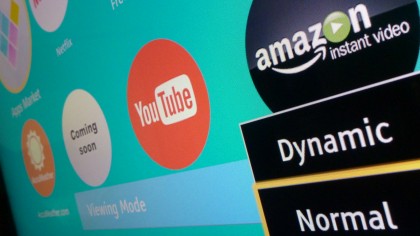Why you can trust TechRadar
The TX-40CX680B is very small for a 4K TV. Received wisdom has it that a 4K TV should be about 55 inches in size and be viewed from around six feet away, at least according to THX.
It's also without 4K Studio Master Processor, a suite of finessed picture processing that graces the upper echelons of Panasonic's LED TV range.
None of that matters; the TX-40CX680B makes use of every one of its pixels. A blast of Marco Polo on 4K Netflix is super-sharp and clear, detail within the gloomy court of Kublai Khan illuminated well. Black levels and contrast are highly impressive, with punchy colours, and characters in the shadows standing out.

Some detail is blanked by the lack of fine shadow detailing, but overall that LED backlight is doing a great job, and there's no blue-ish tinge or annoying LED leakage to worry about either.
Colours are great whatever the material; the vast desert vistas of Marco Polo are well saturated, though I did tweak the colour downwards a tad in Cinema mode, the most accurate preset out of the box. It's also worth using the Intelligent Frame Creation mode on the mid-strength setting to knock the edge off film judder, which it does cleanly.
It's not just 4K that excels on the TX-40CX680B.
A Blu-ray disc of Gravity impresses, too, while even some live tennis on BBC Two HD from the Freeview HD tuner likewise impresses. There's perhaps a touch of picture noise in anything less than Full HD, though you have to go even lower down the video food chain before the TX-40CX680B's upscaling tech begins to break ranks.
That same tennis broadcast on BBC Two is dominated by fizzing around the players, a sheen of picture noise and soft, ill-defined edges that are all far more noticeable here than on a regular HDTV.
It's not unexpected, but it is disappointing.
That said, the TX-40CX680B remains a highly impressive TV when judged on picture quality alone, thanks just as much to its advanced LED panel as its 4K resolution.
Is 4K at 40-inches worth having? Absolutely – and it will be a default feature at this size by 2016.
Current page: Picture quality
Prev Page Introduction and features Next Page Usability, sound quality and valueJamie is a freelance tech, travel and space journalist based in the UK. He’s been writing regularly for Techradar since it was launched in 2008 and also writes regularly for Forbes, The Telegraph, the South China Morning Post, Sky & Telescope and the Sky At Night magazine as well as other Future titles T3, Digital Camera World, All About Space and Space.com. He also edits two of his own websites, TravGear.com and WhenIsTheNextEclipse.com that reflect his obsession with travel gear and solar eclipse travel. He is the author of A Stargazing Program For Beginners (Springer, 2015),

